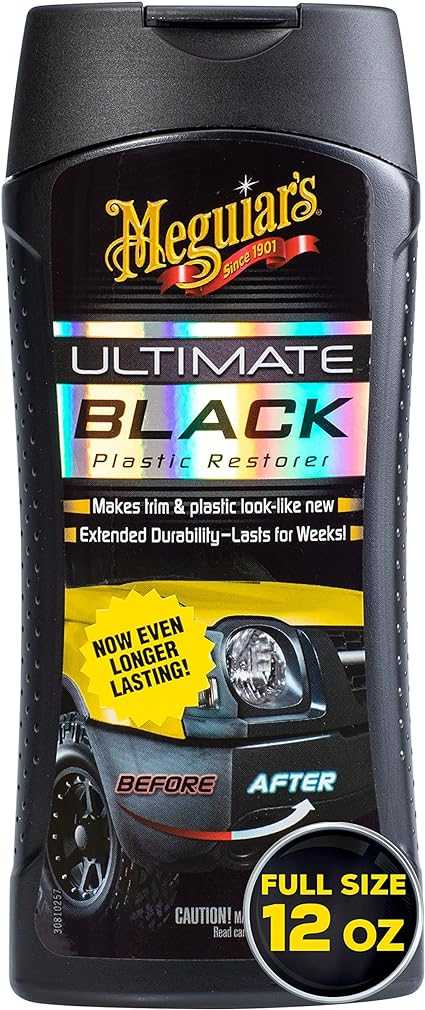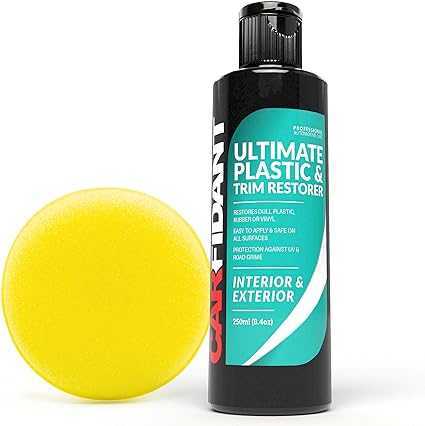When it comes to rejuvenating the appearance of your car’s interior, painting the plastic components can make a significant difference. However, choosing the best paint for car interior plastic can be a daunting task, considering the wide range of options available. To help you make an informed decision, we have put together this exclusive buying guide. Read on to discover the key factors to consider when selecting the perfect paint for your car’s interior plastic.
5 Best Paint For Car Interior Plastic & Vinyl
#1. Meguiar’s Ultimate Black Plastic Restorer
|
#2. Followin Plastic Restorer
|
#3. CAR GUYS Plastic Restorer
|
#4.Dupli-Color HVP106 Black Spray Paint
|
#5. Carfidant Trim & Plastic Restorer
|
Factors to Consider While Chossing Paint Restorer
Compatibility and Adhesion
One of the most critical factors to consider when choosing paint for car interior plastic is compatibility. Ensure that the paint you select is specifically designed for automotive applications and can adhere well to plastic surfaces. Look for products labeled as “vinyl dye” or “interior paint,” as these are formulated to bond effectively with plastic.
Durability and Flexibility
Car interiors are subjected to constant use and can experience exposure to sunlight, temperature changes, and general wear and tear. Therefore, it’s crucial to choose a paint that offers durability and flexibility. Opt for paints that are resistant to cracking, peeling, and fading, ensuring that your newly painted interior will stand the test of time.
Application Ease
Consider the ease of application when selecting the best paint for car interior plastic. Look for paints that come in user-friendly forms, such as spray cans or those suitable for brush application. Ease of use will ensure a smoother and more even application, providing a professional-looking finish.
Color Options
The color of the paint is, of course, an important consideration. Choose a paint that offers a wide range of color options, allowing you to match or contrast with your car’s interior design. Whether you prefer classic black, sophisticated gray, or vibrant red, select a paint that suits your personal taste and style.
Types of Paint for Car Interior Plastic
Vinyl Dye
Vinyl dye is a popular choice for painting car interior plastic. It is specifically formulated to adhere to vinyl and plastic surfaces, providing excellent adhesion and durability. Vinyl dye is available in a variety of colors and can be applied using a spray can or an airbrush.
Interior Paint
Interior paint designed for automotive plastics is another option. These paints are typically water-based and offer good adhesion and flexibility. They are available in various colors and can be applied with a brush or spray can. Interior paints provide a smooth and even finish on plastic surfaces.
Trim Paint
Trim paints are specifically formulated for painting plastic trim pieces in car interiors. These paints are designed to bond well with plastic surfaces and provide a long-lasting finish. Trim paints come in a range of colors and can be applied with a brush or spray can.
Plastic Primer
While not a type of paint itself, a plastic primer is often used as a base coat before applying paint to car interior plastic. It helps improve adhesion and ensures a smoother and more durable finish. Plastic primers are available in spray or brush-on forms and should be used according to the manufacturer’s instructions.
How To Apply Paint To Car Interior

Applying paint to car interiors requires careful preparation and application techniques to achieve a professional-looking finish. Here is a step-by-step guide on how to apply paint to car interiors:
1. Prepare the Interior Surfaces:
- Start by removing any removable parts or components from the car’s interior, such as panels, trim pieces, or accessories.
- Thoroughly clean the surfaces that will be painted using a mild detergent and water. Remove any dirt, grease, or residue, and ensure the surfaces are completely dry before proceeding.
2. Sand the Surfaces:
- Lightly sand the plastic surfaces to create a rough texture that promotes better paint adhesion. Use fine-grit sandpaper or a sanding block and work in even strokes.
- Wipe away any sanding dust with a clean cloth or tack cloth.
3. Apply Plastic Primer (if needed):
- If using a plastic primer, follow the manufacturer’s instructions and apply it to the sanded surfaces. Use a brush or spray can, applying thin and even coats.
- Allow the primer to dry completely according to the recommended drying time.
4. Apply the Paint:
- Shake the paint can or mix the paint according to the manufacturer’s instructions.
- Apply the paint in thin and even coats to the prepared surfaces. Use a brush, spray can, or airbrush, depending on the type of paint chosen.
- Start with light passes and build up the color gradually, allowing each coat to dry before applying the next one.
- Pay attention to any specific application techniques recommended by the paint manufacturer, such as overlapping strokes or directional spraying.
5. Allow the Paint to Dry:
- Follow the drying time specified by the paint manufacturer. It is essential to allow the paint to dry completely between coats and before reassembling any parts.
- Avoid touching or placing objects on the painted surfaces until they are fully dry to prevent smudging or damage.
6. Reassemble the Interior:
- Once the paint is dry, carefully reattach the panels, trim pieces, and accessories that were removed earlier.
- Take care to align and secure everything properly to ensure a neat and cohesive appearance.
FAQs on Best Car Interior Paint
Conclusion
In conclusion, selecting the best paint for car interior plastic is crucial for achieving a durable, attractive, and professional-looking finish. Whether you choose vinyl dye, interior paint, or trim paint, ensure compatibility with automotive plastics, durability, ease of application, and a wide range of color options. Proper surface preparation, following the manufacturer’s instructions, and allowing sufficient drying time are essential for optimal results. With the right paint and meticulous application, you can transform your car’s interior, enhancing its overall aesthetics and creating a more enjoyable driving experience.





